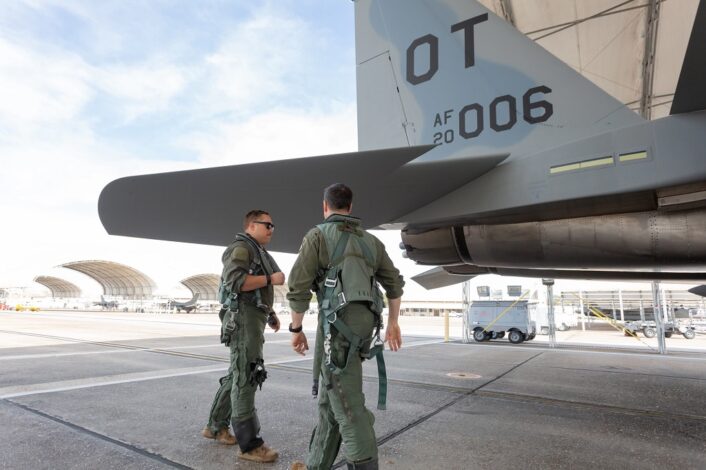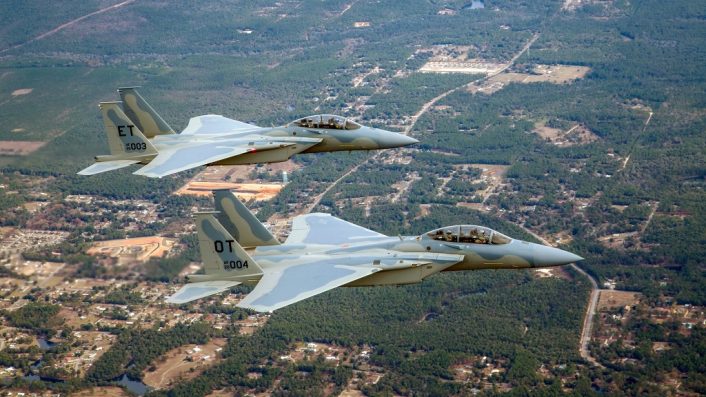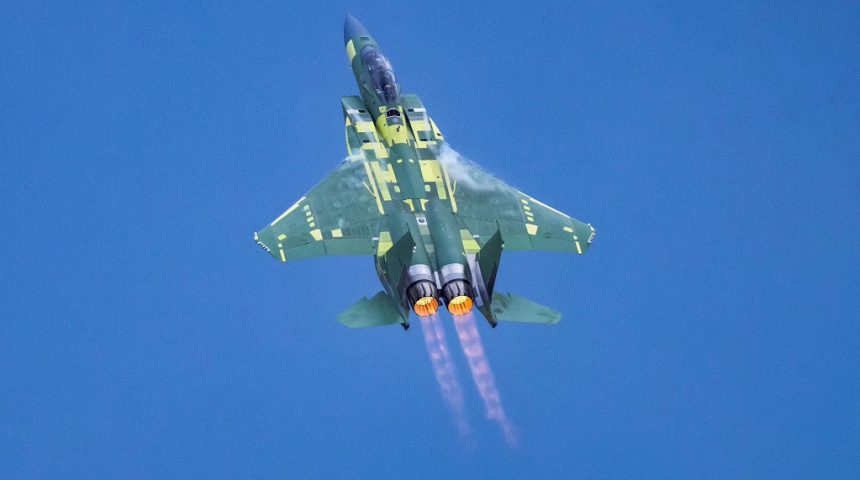F-15EX-008 is the first planned to be delivered to the 142nd Fighter Wing of the Oregon Air National Guard.
The introduction into operational service of the F-15EX Eagle II is getting closer, now that the first aircraft for an operational unit has flown and pilots are training for it. In fact, EX-008, the first Eagle II assigned to the 142nd Fighter Wing took off for its maiden flight from Boeing’s plant at Lambert International Airport in St. Louis on March 10, 2024. Few days earlier, instructor pilots from the 142nd FW’s 123rd Fighter Squadron performed their first flight on the F-15EX at Eglin Air Force Base.
EX-008 performed its first functional test flight with its primer paint and a small serial number (20008) on its twin tails, and will receive its final colors and insignias before the delivery this summer. As happened since EX-003, this F-15EX is not equipped with the conformal fuel tanks seen on the first two aircraft built.
Visualizza questo post su Instagram
The plan currently foresees the 142nd FW at Portland Air National Guard Base receiving 18 F-15EXs, becoming the first operational F-15EX unit in fiscal year 2025. The service was initially planning to perform the training on the type at Kingsley Field in Klamath Falls, Oregon, where the 173rd Fighter Wing runs the F-15 Eagle B-Course and recently graduated the last Eagle instructor pilots.
However, the plan to establish there the Formal Training Unit for the F-15EX is being reconsidered, as the Air Force selected Kingsley Field’s infrastructure and airspace for an F-35 FTU, with the first deliveries in 2026. The F-15 training is expected to be taken over by Seymour Johnson Air Force Base, North Carolina, which is already home of the F-15E Strike Eagle FTU.
The first instructors from the Oregon ANG

Five F-15C instructor pilots from the 123rd Fighter Squadron are currently conducting training in the F-15EX with instructors from the 85th Test and Evaluation Squadron at Eglin Air Force Base for two weeks in March. The Air Force said training commenced with the first training flight flown by 123rd Fighter Squadron pilot, Lt. Col. Joel “Thermo” Thesing, on March 7th.
Thesing commented on all the hard work that the 142nd Fighter Wing has done to lobby for the F-15EX, to plan its bed down and sustainment. After the first flights, the pilots are impressed by the new aircraft, which closely resembles its C-model predecessor externally but it’s entirely different and much improved internally and will inevitably take some getting used to.
Visualizza questo post su Instagram
“My impression of the F-15EX after flying it for the first time was that it is an awesome, awesome aircraft,” said Lt. Col. Thesing. “The engines feel like they have a lot more power than the those in the C-model, and the radar and avionics are a generational improvement over the F-15C as well.”
Even if the C-model and the EX-model are similar, the EX has some new features, such as the fly-by-wire flight controls which replaced the manual flight controls featured in the older model F-15s, are taking some time in acclimating to the EX.
“The initial work will take a lot of studying and practice to get the basics of flying the aircraft down and learning it’s systems, and that process has a steep learning curve, and never really ends for as long as you’re a pilot,” said Thesing. “That being said, I look forward to when the focus can shift from how to fly the EX, to how to employ it tactically.”
The F-15EX Eagle II

The new F-15EX, developed from the F-15QA that was until now the most advanced Eagle variant, comes from a series of needs mainly emerged after the National Defense Strategy directed the U.S. armed services to adapt to the new threats from China and Russia. The aircraft, while extremely similar to the QA variant, features some US-only capabilities like the new AN/ALQ-250 Eagle Passive Active Warning Survivability System (EPAWSS) electronic warfare and electronic surveillance system and Open Mission Systems (OMS) architecture.
Initially the F-15C/D fleet was to be entirely replaced by the F-22A Raptor, the first 5th gen fighter aircraft of the U.S. Air Force. The service planned to buy 750 Raptors to replace both the F-15 Eagle and the F-16 Fighting Falcon, but that number was cut to 187 production aircraft, which is also less than the about 230 F-15C/D still in service. Because of this, the operational life of the Eagle had to be extended as it was initially scheduled to be retired in 2019.
When the F-15X program, also known as Advanced F-15, was first launched, both a single and two seat variants were proposed, called F-15CX and F-15EX respectively, and both with the same exact capabilities. The Air Force ultimately decided to go only with the two seats variant, which will reportedly have the option to fly with a single pilot or both pilot and Weapons Systems Officer (WSO).
The Eagle II completed last year the Integrated Test & Evaluation (IT&E) Phase I, during which the F-15EX participated in 19 Large Force Exercise events where it integrated with 5th generation aircraft, recorded the longest Air-to-Air Missile employment, and validated the first F-15EX employment of the longest non-nuclear Air-to-Ground munition release in the inventory.
While the initial Phase I testing was conducted with CFTs, the test data produced is representative of the production aircraft equipped with two external tanks, said the Director, Operational Test & Evaluation report. The lack of CFTs, however, will limit the number of external pods and air-to-ground weapons the F-15EX will be able to employ. The report also mentioned Phase II, which consisted of five four-ship missions, was cancelled due to already having sufficient data to complete an assessment to support the full-rate production (FRP) decision.
The service initially planned to acquire up to 144 F-15EX aircraft, however the number decreased to 104 last year. Now the number was reduced even more, with the FY 2025 budget request mentioning the Air Force will buy the last aircraft in 2025 and then end the production, capping the fleet at 98 aircraft. Currently the first six aircraft have been delivered to Eglin AFB.









